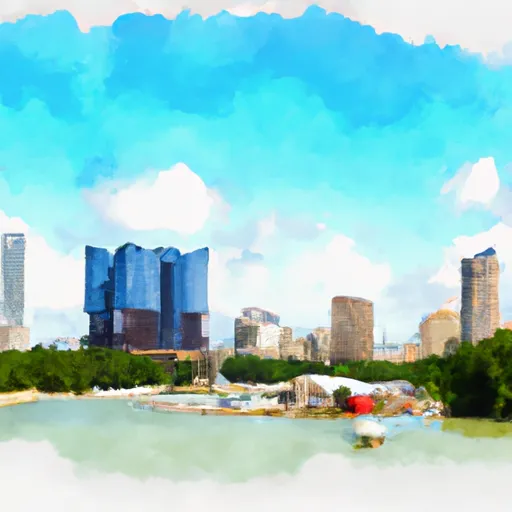-
 Snoflo Premium
Snoflo Premium
Get unlimited access to all our content
With no Ad interruptions! - Start Your Free Trial Login with existing account
Horseshoe-Bay
Eden Index
Climate
8.3
•
Recreation
5.1
•
Community
•
Safeguard
5.1/10

Horseshoe Bay, Texas, is a picturesque city located in the heart of the Texas Hill Country. Known for its stunning natural beauty, Horseshoe Bay offers a unique combination of a warm climate, diverse hydrology constituents, and abundant outdoor recreation opportunities.
The climate in Horseshoe Bay is characterized by hot summers and mild winters. Summers often see temperatures soar above 90°F (32°C), while winters typically remain pleasant with temperatures rarely dropping below 50°F (10°C). The region experiences moderate rainfall throughout the year, particularly during the spring and fall seasons.
Horseshoe Bay is nestled along the shores of Lake LBJ, a reservoir created by the Colorado River. This hydrological feature provides a myriad of recreational opportunities such as boating, fishing, and swimming. Additionally, the surrounding area boasts several scenic waterfalls, rivers, and creeks, making it a haven for outdoor enthusiasts.
Outdoor recreation activities in Horseshoe Bay are plentiful. Golf enthusiasts can enjoy world-class golf courses, including the championship-level Ram Rock and Apple Rock courses. Nature lovers can explore the nearby state parks, hiking trails, and wildlife preserves. The city also offers tennis courts, yacht clubs, and a marina for those seeking further adventure.
In summary, Horseshoe Bay, Texas, offers a vibrant climate with warm summers and mild winters. The hydrology constituents, including Lake LBJ and surrounding waterways, provide ample opportunities for water-based activities. With its natural beauty and diverse outdoor recreation options, Horseshoe Bay is a paradise for those looking to explore and indulge in nature.
What is the Eden Index?
The Snoflo Eden Index serves as a comprehensive rating system for regions, evaluating their desirability through a holistic assessment of climate health, outdoor recreation opportunities, and natural disaster risk, acknowledging the profound impact of these factors on livability and well-being.
Climate Health Indicator (CHI): 8.3
Horseshoe-Bay receives approximately
783mm of rain per year,
with humidity levels near 83%
and air temperatures averaging around
20°C.
Horseshoe-Bay has a plant hardyness factor of
8, meaning
plants and agriculture in this region tend to thrive here all year round.
By considering the ideal temperature range, reliable water supplies, clean air, and stable seasonal rain or snowpacks, the Climate Health Indicator (CHI) underscores the significance of a healthy climate as the foundation for quality living.
A healthy climate is paramount for ensuring a high quality of life and livability in a region, fostering both physical well-being and environmental harmony. This can be characterized by ideal temperatures, reliable access to water supplies, clean air, and consistent seasonal rain or snowpacks.
Weather Forecast
Streamflow Conditions
Middle Colorado-Llano
Area Rivers
Middle Colorado-Llano
Snowpack Depths
Middle Colorado-Llano
Reservoir Storage Capacity
Middle Colorado-Llano
Groundwater Levels
Recreational Opportunity Index (ROI): 5.1
The Recreational Opportunity Index (ROI) recognizes the value of outdoor recreational options, such as parks, hiking trails, camping sites, and fishing spots, while acknowledging that climate plays a pivotal role in ensuring the comfort and consistency of these experiences.
Access to outdoor recreational opportunities, encompassing activities such as parks, hiking, camping, and fishing, is crucial for overall well-being, and the climate plays a pivotal role in enabling and enhancing these experiences, ensuring that individuals can engage in nature-based activities comfortably and consistently.
Camping Areas
| Campground | Campsites | Reservations | Toilets | Showers | Elevation |
|---|---|---|---|---|---|
| Camp Creek - Lake Travis | None | 698 ft | |||
| Canyon Lake Military - Randolph AFB | None | 944 ft | |||
| North Park - Canyon Lake | 20 | 998 ft | |||
| Pedernales Falls State Park | 69 | 1,056 ft | |||
| Cranes Mill Park - Canyon Lake | 45 | 950 ft | |||
| Canyon - Canyon Lake | 150 | 980 ft | |||
| Potters Creek - Canyon Lake | 120 | 995 ft | |||
| Braunig Lake Park | None | 514 ft | |||
| Calaveras Lake Park Dispersed | None | 526 ft | |||
| Blanco State Park | 35 | 1,319 ft |
Nearby Ski Areas
Catastrophe Safeguard Index (CSI):
The Catastrophe Safeguard Index (CSI) recognizes that natural disaster risk, encompassing floods, fires, hurricanes, and tornadoes, can drastically affect safety and the overall appeal of an area.
The level of natural disaster risk in a region significantly affects safety and the overall livability, with climate change amplifying these risks by potentially increasing the frequency and intensity of events like floods, fires, hurricanes, and tornadoes, thereby posing substantial challenges to community resilience and well-being.
Community Resilience Indicator (CRI):
The Community Resilience Indicator (CRI) recognizes that education, healthcare, and socioeconomics are crucial to the well-being of a region. The CRI acknowledges the profound impact of these elements on residents' overall quality of life. By evaluating educational resources, healthcare accessibility, and economic inclusivity, the index captures the essential aspects that contribute to a thriving community, fostering resident satisfaction, equity, and social cohesion.

